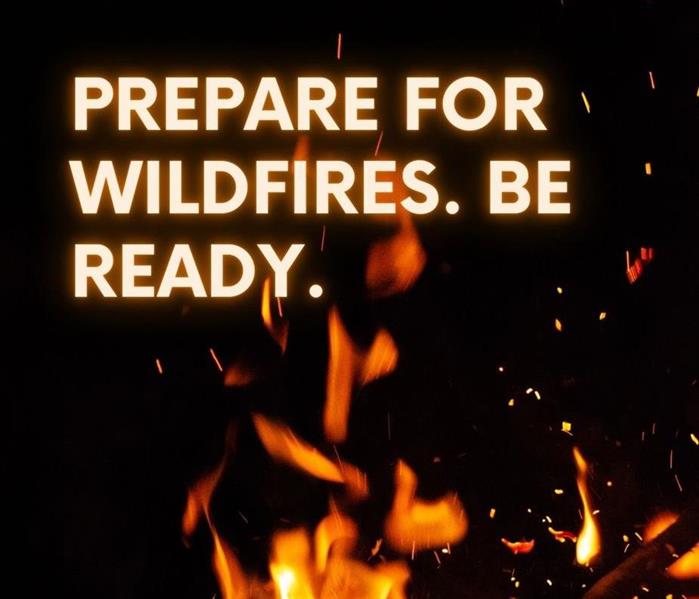History of Montana Wildfires: From Native American Traditions to Modern Fire Management Strategies
3/30/2023 (Permalink)
 History of Montana Wildfires
History of Montana Wildfires
Montana is a beautiful state with vast landscapes and breathtaking scenery. However, with its beauty comes a history of wildfires that have ravaged the state for centuries. From small grass fires to massive infernos, Montana has seen it all. In this blog, we will take a closer look at the history of Montana fires and how they have affected the state over the years.
The Use of Fire by Native Americans and the Arrival of European Settlers
Montana's history of fires dates back to the time when Native Americans inhabited the area. They used fire as a tool for hunting, clearing land, and improving the growth of certain plants. However, with the arrival of European settlers in the 1800s, the use of fire began to change. Settlers used fire to clear land for farming and ranching, and as a result, fires became more frequent and widespread.
The Devastating "Big Blowup" of 1910
One of the most devastating fires in Montana's history occurred in 1910. Known as the "Big Blowup," the fire burned over three million acres and killed 87 people. The fire was caused by a combination of lightning strikes, drought, and strong winds, which created a perfect storm for the fire to spread rapidly. The Big Blowup led to the creation of the U.S. Forest Service and new policies for fire management.
The Role of the Civilian Conservation Corps in Fire Prevention and Management
In the 1930s, the Civilian Conservation Corps (CCC) was established, and many of its members worked to prevent and fight fires in Montana's forests. The CCC built fire lookout towers and trails, and also conducted controlled burns to reduce the risk of wildfires. These efforts were successful in reducing the number of fires in Montana.
The Resurgence of Wildfires in the 1980s and 1990s
However, in the 1980s and 1990s, Montana experienced a resurgence of wildfires. Factors such as drought, high temperatures, and an increase in residential development in forested areas contributed to the increase in fires. In 2000, the state experienced one of its worst fire seasons on record, with over 1.3 million acres burned.
Recent Wildfires and Current Fire Management Strategies in Montana
In recent years, Montana has continued to experience wildfires, with the 2017 fire season being one of the worst in the state's history. Over one million acres burned, and the fires caused significant damage to homes and property. The cause of the fires was a combination of lightning strikes and human activity, such as campfires and fireworks.
The Importance of Proactive Fire Management
Today, Montana has a comprehensive fire management plan in place to prevent and manage wildfires. The plan includes measures such as prescribed burns, fuel reduction, and fire suppression. The state also has a well-trained and equipped firefighting force that works tirelessly to protect Montana's forests and communities.
In conclusion, Montana's history of fires is a long and complex one. From the use of fire by Native Americans to the devastating fires of the early 1900s and the recent resurgence of wildfires, fires have played a significant role in shaping the state's landscape and history. While Montana will always face the risk of wildfires, the state's proactive approach to fire management and suppression has helped to reduce the number and severity of fires in recent years. As a business professional, it is essential to be aware of the risks of wildfires and to take steps to protect your business and employees in the event of a fire. By working together, we can help to prevent and manage wildfires in Montana and beyond.
7 Essential Steps to Prepare for Wildfires: Protecting Your Home and Family
3/30/2023 (Permalink)
 Prepare your family for wildfires in Montana.
Prepare your family for wildfires in Montana.
Wildfires are a natural phenomenon that have existed for millions of years. However, with climate change, human activity, and urbanization, wildfires have become more frequent and destructive. The devastating effects of wildfires can be seen all over the world, from Australia to California. As such, it is important to be prepared for wildfires and have a plan in place to protect your family and property. In this blog, we will discuss some key steps to help you prepare for wildfires.
Create a wildfire plan
The first step in preparing for a wildfire is to create a wildfire plan. This plan should outline what you will do in the event of a wildfire, including evacuation routes, communication plans, and emergency supplies. Make sure that everyone in your household is aware of the plan and knows what to do in case of an emergency. You should also keep a copy of the plan in a safe place, such as a fireproof safe or cloud storage.
Maintain your property
The second step is to maintain your property to reduce the risk of wildfires. This includes keeping your lawn and garden well-maintained, removing dead or dry vegetation, and creating a defensible space around your property. A defensible space is an area around your home that has been cleared of flammable materials and vegetation, which can help slow the spread of a wildfire and give firefighters a place to defend your property.
Prepare an emergency kit
The third step is to prepare an emergency kit. This kit should include essential items such as food, water, and first aid supplies, as well as any medications, important documents, and other items that you may need in case of an emergency. Keep the kit in a readily accessible location, such as in your car or by the front door, so that you can quickly grab it if you need to evacuate.
Stay informed
The fourth step is to stay informed about wildfires in your area. This includes signing up for local alerts and notifications, listening to the news, and checking the National Wildfire Coordinating Group's website for updates. You should also have a battery-powered or hand-cranked radio in your emergency kit to stay informed if the power goes out.
Be ready to evacuate
The fifth step is to be ready to evacuate at a moment's notice. This means having a go-bag packed with essential items, including a change of clothes, toiletries, and any necessary medications. You should also have a plan for how you will evacuate and where you will go, such as to a friend or family member's home, a hotel, or an evacuation center.
Have a backup power source
The sixth step is to have a backup power source. If the power goes out, you may need a generator to power essential items such as your refrigerator, medical equipment, or communication devices. Make sure that you have a generator that is rated for outdoor use and follow all safety precautions when using it.
Have a plan for pets and livestock
The seventh step is to have a plan for your pets and livestock. Make sure that you have carriers or leashes for your pets, as well as enough food and water for them. If you have livestock, you may need to evacuate them to a safe location or have a plan for their care if you need to evacuate without them.
In conclusion, preparing for wildfires is essential to protect your family and property. By creating a wildfire plan, maintaining your property, preparing an emergency kit, staying informed, being ready to evacuate, having a backup power source, and having a plan for pets and livestock, you can be better prepared to deal with the devastating effects of wildfires. Remember to stay calm, follow the advice of local authorities, and evacuate immediately if necessary. Stay safe!




 24/7 Emergency Service
24/7 Emergency Service

